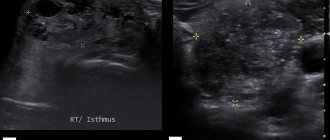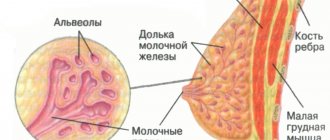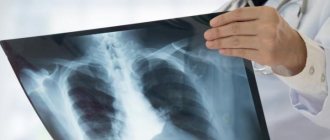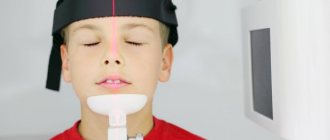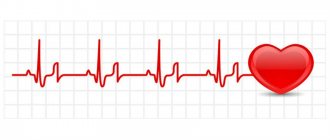1384
Braces today are one of the affordable and absolutely safe ways to correct defects in the dental system.
Systems involve a long period of treatment, during which anything can happen to a person, for example, health deteriorates
In some cases, it is necessary to undergo an MRI to make a correct diagnosis.
This is where some patients get lost. Many of them have repeatedly come across information about the dangers of magnetic resonance imaging during braces, and the severe distortion of the results.
Let's try to find out how true the rumors are.
general information
The operation of an MRI tomograph is based on magnetic potential - the device generates a field that affects tissue. When the waves pass, the hydrogen atoms in the human body change and are recorded by the sensors of the device. The received signals are read by a tomograph, the information is processed in a computer and converted into an image.
The concentration of hydrogen atoms is not constant depending on the area of the body, and accordingly the magnetic field changes differently.
MRI
Therefore, the picture on the screen appears in the form of outlines of organs, borders, tissue and muscle spaces, vessels and nerves, and inflammation are displayed on the monitor.
Stages of the procedure
It is also worth considering the sequence of stages and features of the procedure. Indeed, in the future, every second, or even the first, will undergo magnetic resonance diagnostics:
- The patient is met and questioned about the presence of fragments, metal prostheses, piercings (you need to answer honestly, as truthful information will help prevent damage to images and the appearance of artifacts);
- They are asked to change into a disposable shirt or remain in underwear;
- The person lies down on a special couch of the device and fixes the part of the body being diagnosed. The staff provides headphones for relaxation and a bulb to stop the procedure. No discomfort is normally felt. Only vibrations of the device and noise.
Interesting to know! Even tattoos can be a contraindication for MRI, because some tattoo inks used to contain metal particles. This is because metal particles in the layers of the skin can move slightly under the influence of magnetic fields, thereby heating up and causing a burning sensation.
MRI is one of the methods of modern non-invasive diagnostics. The method is based on the response of hydrogen atoms of internal tissues and organs to the influence of a powerful magnetic field. The equipment detects when hydrogen atoms change their position and transmits the image to the screen in the form of a three-dimensional picture.
The MRI equipment itself is a large cylinder with holes at both ends. Inside, the device is equipped with a movable table on which the patient lies during the examination. There are several options for tomographs:
- Open.
- Closed.
- Partially open.
In open tomographs, as a rule, very obese patients are examined, as well as patients suffering from severe claustrophobia.
The tomography procedure must be carried out completely motionless, therefore, to ensure immobility, the patient is fixed with special belts. To get a complete and detailed picture, you need to take several pictures. Each shot takes some time, and the entire procedure can last from 20 to 50 minutes.
Despite the fact that the tomography procedure is absolutely painless and does not cause harm to health, it is often undesirable to do it. Firstly, the cost of tomography is quite high, and secondly, such a study requires a certain amount of time. If the tomography shows an unreliable result for a patient with metal braces, the procedure will have to be repeated.
How metal braces interact with a magnetic field
Many people believe that braces become hot or electrified - this is a common misconception. Everyone knows that a magnet attracts metal - the same law of physics also applies to a tomograph.
But the waves here are weaker, so the patient does not feel anything, there will be no pain or even discomfort. An MRI with braces is painless, but this does not mean that the scanner will not react to them.
If the staples are in an area of magnetic field, they attract waves and change the physical features. Violations are recorded by the device’s sensors and displayed on images.
If you have braces, be sure to inform your doctor about it.
Modern tomographs are capable of operating in several modes, which helps to obtain informative images in the case of alloy structures.
Reviews
Patients undergoing orthodontic treatment using braces should know that if health problems arise during the correction stages, they can always be diagnosed using MRI.
The presence of metal elements in the mouth is not an absolute prohibition for assessing the state of health using the presented method. Before the study, it is important to consult with your doctor and discuss all the nuances.
Our readers will be interested in reading the personal experiences of real people who have undergone MRI procedures with metal orthodontic appliances. Therefore, if you would like to leave feedback about the quality of diagnosis in this case and the sensations that arose while you were in the tomograph, leave your comment below.
If you find an error, please select a piece of text and press Ctrl+Enter.
Is there any harm to the body?
We have found that there is no pain or discomfort during diagnosis with braces or retainers on the teeth.
However, patients are worried that there is some “hidden threat” from such procedures and the dangerous consequences are macroscopically invisible and will certainly appear in the future. Doctors assure that such a judgment is erroneous - there is no harm from the research.
Magnetic field braces do not become magnetized, are not deformed, and do not change the bite or position of the teeth.
The structures do not adversely affect the brain and sensory organs. The main thing that is recommended to be wary of is ignoring contraindications to the study.
Important are the 1st and 3rd trimester of pregnancy, the presence of an insulin pump or pacemaker (devices break due to the magnetic field).
Non-reactive material
Before undergoing the procedure, the patient must notify the doctor about the presence of the system in the mouth. This does not mean at all that they will have to be removed. The doctor needs the information to find out whether it contains ferromagnets.
If the orthodontic structure contains such materials, the doctor must make one of 3 decisions:
- Ignore the presence of the structure in the mouth and proceed with the examination. This decision is made if organs remote from the braces are subjected to MRI, or the influence of ferromagnets can be eliminated by appropriately setting the device.
- Replace the method with computed tomography.
- Invite the patient to remove the devices - if the head is being examined and MRI cannot be replaced by CT.
The main thing to know is what braces are made of.
It is important to know the chemical composition of the structure - if metal is visible externally, this is not considered a limitation. The study is contraindicated only in the presence of steel braces, which are rarely installed.
More often, clinics use alloys based on:
- titanium;
- plastic;
- ceramics.
These materials do not affect the magnetic field in any way, so you can safely sign up for the study.
But if the ceramic structure is supported by a purely iron frame or there are similar implants in the teeth themselves, MRI is contraindicated.
How braces affect the quality of pictures
We have found that braces are safe and do not cause any harm to the patient. But why then aren’t MRIs of the head done when there are steel structures on the teeth? The main reason is a decrease in information content:
- blurred areas appear in the pictures;
- White spots are noted in the area of the structure, which reduces the information content of the examination.
Only steel products create such interference. Ceramic, titanium and plastic structures do not affect the quality of images.
Are there any obstacles to examining other parts of the body?
It is not relevant to examine the head with braces when diagnosing the cerebrum, blood vessels, sensory organs and sinuses. Metal implants only interfere with this part of the body.
There are no obstacles to examining the organs of the chest and abdominal cavity, and joints of the limbs.
In this case, the braces are not influenced by the magnetic field and are not able to interfere with the information content of the procedure.
Braces do not cause any harm to the body, but only reduce the quality of the images.
It makes no sense to do an MRI of the head with steel structures; in other cases, the study is carried out. If there are contraindications, the constructs are removed and CT or ultrasound angiography is performed.
Alternative method
If the bracket is located in the irradiation zone and contains metal elements that distort the MRI results, two options are possible: remove it or replace the MRI with computed tomography. CT is absolutely indifferent to any material from which an orthodontic device may be made. The diagnostic accuracy will remain unchanged.
Like MRI, computed tomography produces the result in the form of a three-dimensional image of the organ and forms it layer by layer. However, this is done not using electromagnetic waves, but X-rays.
The part of the body being examined is exposed from all sides to X-ray irradiation, the absorption and transmission of which by tissues depends on the density of the latter. An X-ray tomograph forms a three-dimensional image of the object under study based on the difference in its density in different places.
Due to the fact that MRI and CT use different operating principles, their information content in relation to different organs is different. Therefore, in some cases, CT is preferred, in others - MRI.
Computed tomography works better when examining hard tissues, including bones, teeth, and joints. This is due to the fact that bone density is greater than the soft tissue surrounding it. CT scans are used to diagnose:
- hernias;
- bone pathologies (osteoporosis, scoliosis);
- traumatic brain injuries;
- fractures and damage to bones, joints, teeth;
- bleeding and diseases of internal organs (pneumonia, tuberculosis, malignant tumors of the stomach, liver, pancreas, etc.);
- diseases of the thyroid and parathyroid glands;
- vascular diseases (aneurysms, atherosclerosis, etc.);
- stones, cysts, tumors of the hepatobiliary and genitourinary systems;
- and some others.
MRI works better with soft tissues, blood vessels, and joint surfaces. The main objects of examination with magnetic resonance imaging:
- tumor formations;
- brain and spinal cord;
- nervous system;
- neurological diseases, multiple sclerosis;
- heart disease (stroke);
- ligaments, joint surfaces, muscles;
- foci of inflammation, abscisses, hernias, cysts.
It is quite natural that patients have a question in which cases these two methods of examination are more informative and safe, and which one to give preference in a particular case. Ultimately, this is determined by the doctor. But for people who are undergoing an MRI or CT scan, the following information will not be superfluous.
The electromagnetic radiation generated by an MRI scanner is absolutely safe for the human body. X-ray exposure poses a certain danger. But since its value during CT scanning is minimal, it does not cause harm to health.
As for the information content, it depends on the specific case - the type and condition of the organ that is being examined.
Let's figure out together how to care for braces to prevent the development of dental diseases. In this publication, we will find out whether there should be pain when wearing braces.
Follow the link https://dr-zubov.ru/ortodontiya/apparaty/brekety/bezligaturnye-proryv-v-ortodontii.html to become more familiar with the design of non-ligature braces.

